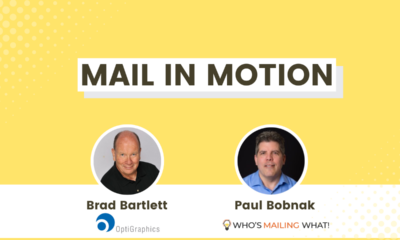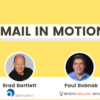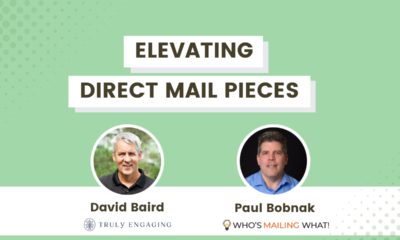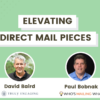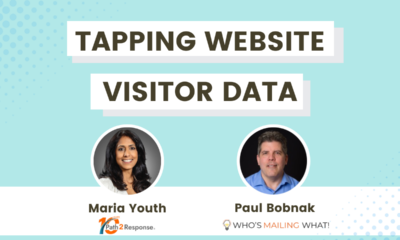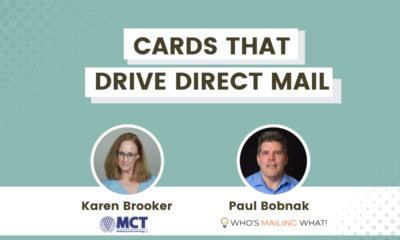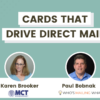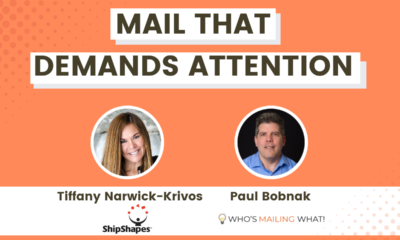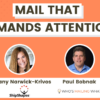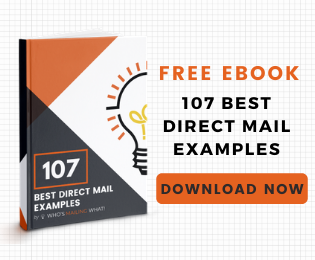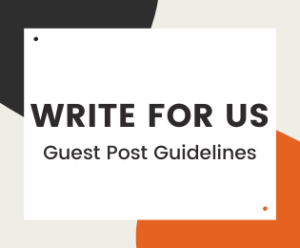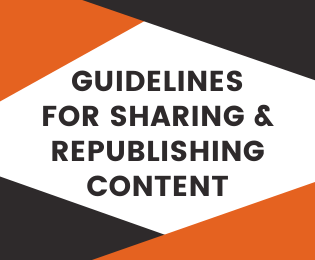MEET THE MAILERS
Meet the Mailers: The Power of Neuroscience in Direct Mail
In this episode, I talked with KERN Agency about how to leverage insights from neuromarketing and personalization to maximize results.
In this episode, I talked with Russell Kern, Founder & CEO of Kern, part of Omnicom Group. Kern is a CRM and creative strategy agency that drives continuous revenue for modern marketers through the power of neuroscience.
Much of our conversation focused on the agency’s work in acquisition and retention programs in mail and other channels that leverage insights from neuromarketing and personalization to maximize results.
Neuromarketing and neuroscience is understanding what drives and creates sales, persuasion, and action.
 Russell KernCEO
Russell KernCEO
KERN Agency
Among the other topics we covered:
- Russell’s agency background beginning with Needham Harper & Steers
- Kern’s range of performance marketing services
- Using personalization in direct mail
- What B2B marketing looks like today
- The value proposition of direct mail
- Trends in direct mail marketing
Here are some questions and answers (edited for clarity and space):
- I noticed on your website that you highlight and talk a lot about neuromarketing. Can you talk about how this approach to marketing can help guide a client’s direct mail campaign?
I learned from one of my dear friends and mentors, Bob Hacker, that marketing is manipulating people without getting caught, you know? And Bob’s got a very funny sense of humor. But what he was really saying is that marketing is about psychology. It’s the psychology of how do you move someone to action, and we as direct marketers, have the most difficult job of all the marketing tasks, because we have to have someone who’s not paying attention, stop, pay attention, and take an action.
So neuromarketing and neuroscience is understanding what drives and creates sales, persuasion, and action, and understanding that we have a primitive brain and a rational brain. And the primitive brain provides uncontrolled release of dopamine when it’s positively stimulated and works really hard to save glucose or energy until it needs to burn energy.
And so understanding neuromarketing and the neurosciences helps to increase the effectiveness of your communication, awaken the reptilian brain (the primitive brain), and understand how to use color, tone, contrast, and emotion to create maximum consideration by the rational brain of your message.
There are four parts that make it up: from economic behavior, processes, to neuropsychology, and evolutionary biology. So it’s a complex topic. The methods that we teach and train are relatively simple to understand and a little harder to execute, but very important.
It reminds me of a quote, from Bob Hacker, talking about the seven emotional copy drivers, which can also be applied as well, to other elements, like imagery and graphics as well. He said that if your copy isn’t dripping with one or more of these, tear it up and start all over again.
So the interesting part is, so from David Ogilvy to Bob Hacker and Denny Hatch, we all have all these rules, but now the rules make sense because when they’re not dripping with emotion, the primal brain is not engaged in releasing dopamine or one of its hormones that has the rational brain to consider.
And so now you understand, well, that’s the science of it all. It’s not just cuz you should use emotion, it’s because emotion is what stimulates this reptilian brain, that’s an automatic release.
It’s why, when you’re going down the aisles of Costco or a supermarket, so many things jump off the shelf and into your cart. “I know I’m in Costco, next thing I know I got four dozen sets of golf balls. I don’t know how they ended up there. I went there to get, you know, chicken.”
We have to understand we’re irrational decision makers and that irrationality is stimulated through emotion. That’s one of the ways in which it’s stimulated.
- What are some specific ways marketers can use the power of print and all its capabilities to get the most from neuromarketing besides visual [or] texture?
Let’s turn that question around. How do you use neuromarketing to get the most from print?
So there are six major stimuli of the primal brain:
- “You-centricity” – “what’s in it for me”.
- Contrast: (black and white, new versus old) that’s why comparison tables are extremely effective.
- Texture, tactile. It’s the only channel we have which is tactile of awakening one of the senses that isn’t used, (bumpy, lumpy, all that sort of stuff).
- Tangible – touching, it’s real, it’s physical. It can do things. And in print, we can have things pop up, we can have things unfold, and so every time we get that involvement of the real, especially in say direct mail or where things are unfolding and there’s pieces and multiple elements, that’s giving us time of consideration
- Emotionality and how it’s presented, through story and through picture.
I might be missing one more, but those are the major ones.
- Well, marketers and brands today know, or should know the value of personalization in direct mail and direct response. What are some good practices to make mail more relevant to a target audience with personalization?
So I think the key thing is when we talk about personalization, we have to remember the word that you used: relevancy. It used to be a big deal, we could say “Hi Russell” or “Hi Paul”, and that was a huge deal.
When you look at relevancy today, relevancy in the mail that I’m getting is directly to the amount of credit line that’s available, limits that are there … And so it’s not about personalization, it’s about relevancy. And so how do they use it? They need to use data that makes their message be exactly of importance to the person they’re delivering. And, you know, the best example is I just got a new truck, I had a free trial of SiriusXM radio and they have been on me and very clear in their mail. “Your Chevrolet truck expires July 11th. This is your serial number. This is your truck type. This is your story. If you miss this opportunity, your price will double.”
And then what I loved about ’em and what I love is that QR codes now work. Ten years ago they didn’t work worth a bean. They are so good. It’s like, okay, boom. I took my phone. I didn’t have to call or email. And so we really have a blessing of a new technology that can make mail work in a way and simpler to respond than we’ve ever had before in our whole time. I think we’re just talking about how I like to see what I call relevancy.
What I know that doesn’t work is showing photos of lifestyle, you know? “Oh, we’re talking to the family, and I show photo of a family.” – nah, I’ve never seen that type of relevancy work. It has to be gutty, gritty, specific, hardcore high relevancy. To a pain or a gain.
- Talking more generally, what is the best value proposition for direct mail? Why does it still work so well?
So, mail is the only channel that allows you to tell a long sales story. And I don’t mean the only channel, but you know, it’s your salesperson in print. Mail works when you have the right combination of elements and if you don’t, mail does not work. I mean, there’s no guarantee mail will work.
But you have to have the right fundamentals. But when it does work, in a consumer environment, because so many people are home and working from home, that means mail can be delivered to the house, and people are standing over the trash can and making the decision in milliseconds, am I keeping or not keeping?
So, when they get the keep, and they look, if it’s relevant – back to the relevancy – or creates desire, or it touches one of their nerves, they have plenty of time to make the study and purchase behavior and it gives ’em all the information they need. The art is how much information to deliver to make the action required.
Sometimes the argument is “hardly give them anything”, because if you give them everything, you won’t get the call to action you need. On the other hand, in catalog mail, those pictures are the most beautiful pictures of the most descriptive copy to drive the purchase behavior. And so I think you have to understand its use and strategy.
The other thing about mail that’s so important is the mailing surface or the envelope. 100% of your investment sits on the mailing surface of your mail until it’s opened. And you can either say I’m gonna make it highly promotional with wowy zowie graphic and creative, or I’m gonna say nothing. Our best controls are blind because curiosity is the number one motivator of “I don’t wanna throw something away that could be of value to me.”
And then all your risk transfers to the inside components of your mail. And so you really need to ask yourself is “what am I doing to get it open?” Whether it’s a self-mailer or a letter pack, I’m a huge fan of letter packs, but how much risk is in the envelope design? And how much time we spend in the inside components versus thinking through, okay, I need an incredible envelope, what technique?
And I think this is where Who’s Mailing What! is so important, because there are so many great mailers that have …I mean, get the credit card mailers … some of the best, have so many clever techniques to drive opening, whether it’s lumpy or die-cut or a window peak or size … Kraft or whatever. You know, texture, you name it … snap pack. That’s the creativity. That’s part of mail. [Y]ou know, an email’s gonna be an email. You don’t get a lot of variation in that. You get to play in an environment, but it’s not for the faint of heart, that’s for sure.
- So what trends do you see unfolding in direct mail for the rest of this year into next year?
Oh, so what I see is pressure on mail given postal increases and rising and paper cost and everything, that trend is gonna continue to put pressure on it.
What it means is I’m gonna have to use mail for when it really matters. Meaning a high-value relationship with a high propensity to convert. I don’t know whether I’ll be able to use it for large-scale, low-cost prospecting customer acquisition.
I think you’re gonna see the pressure of, “I really need an engaged individual before I put that piece of mail to you and I really need to know where you are”. So I think mail is gonna be under pressure. And the other thing with mail is it’s not very sexy and so a lot of markers don’t want to use it.
There’s pressure that it’s not ecologically positive, even with recycled paper, there’s some environmental concerns. So I think mail’s under pressure … but when used right — it’s a powerhouse.
Here is our conversation. We’ve added timecodes for your convenience.
Thanks very much, Russell, for a really interesting and informative chat! To learn more about Kern, visit KernAgency.com.
Your comments and ideas are very important to us in making your Who’s Mailing What! experience even better for you. Through these engaging and helpful talks, we hope you’ll take away practical tips, insights, and stories to inspire and build your own success.
If you have any feedback — or are interested in sharing your expertise and viewpoint with our wide and diverse audience on “Meet the Mailers” — please reach out to me. I’d love to hear from you!







